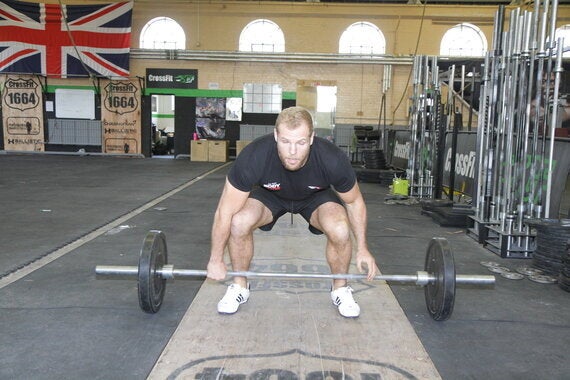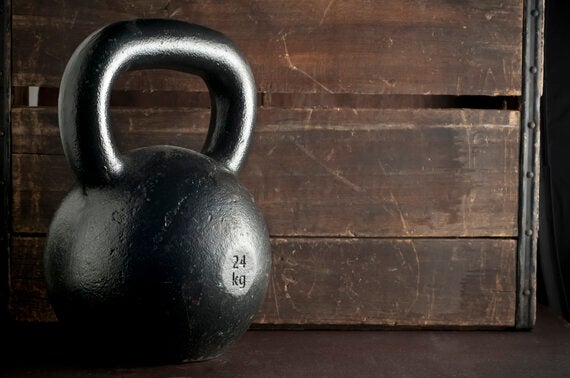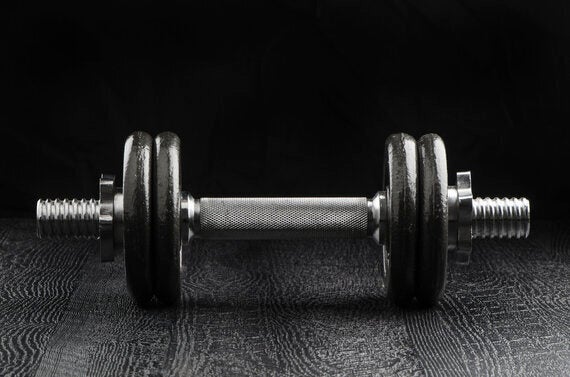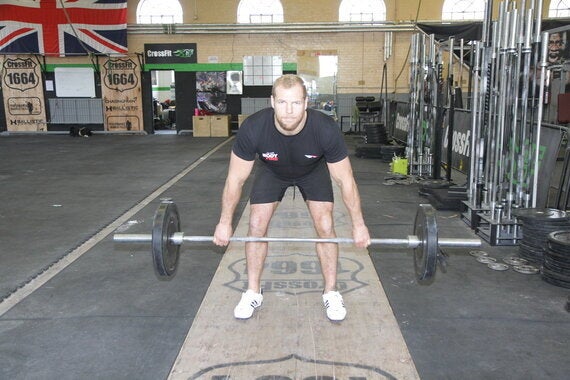You might have seen on social media some positive bits, thank-you, about my new Lean Gains Bodybuilding Ebook, shortly coming out in bound book form.
The Lean Gains guide is all about helping men and women develop and tone their physique, ostensibly as part of a life improver but probably more with looking fantastic on the beach in a few months time
As has been said many times in both this column, as well as other similar ones - to order to achieve the right tone and physique you want, you have to lift.
Nothing commands respect in the gym like a heavy deadlift with impeccable form. But even more importantly, the deadlift is one of the most powerful full body muscle builders on the planet. If you've got a strong deadlift in your locker, chances are you're already a pretty big dude.

The best way to improve your deadlift probably won't surprise you. Do more deadlifts. Just like the best way to improve as a guitar player is to play more guitar, the best way to improve as a deadlifter is to do more deadlifts. Rocket science, it is not.
However, deadlifts take a long time to recover from and can be very taxing on the central nervous system, especially when you go heavy. So for most people, it's just not practical to be deadlifting 3 times each week.
As a result, it's important to fill your programme with the right complimentary exercises that will build strength in all the key muscle groups involved in a deadlift. This way, every time you're faced with a barbell on the floor in front of you, you can continue to make progress without getting beat up.
As a general rule, deadlift heavy every 7 - 10 days. Schedule these days into your programme, and aim to PR in every session. Whether that's an extra rep or extra weight on the bar, try and do more than you did last time.
Always schedule a day of rest after your deadlift day. Your CNS will need time to recover, even if your muscles aren't that sore.
Then, during the rest of the time between your next deadlift, flood your programme with these six exercises. They'll help you build the strength and power you need to go even heavier next time around.
#1 - Kettlebell Swings
Kettlebell swings are one of the best exercises for building explosive power in the hips, recruiting the glutes, hamstrings and abdominals. In a 2012 study by the American Journal of Strength and Conditioning research, just six weeks of kettlebell training resulted in an average 19.8% increase in explosive power in healthy men. Take advantage of it, as this explosive power will translate directly to greater lifting numbers on your deadlift.

istock
Kettlebell swings also involve the very same hip hinge as the top of a deadlift. Performing them regularly will help develop the same neuro-muscular pathways as used in a deadlift, which will help you increase the load when it really matters.
Kettlebell swings are best kept in higher rep ranges, anywhere between 15 and 25 reps per set. Flex your hips and squeeze your glutes at the top of the movement, before letting the kettlebell drop down between your legs. The movement should be fluid throughout, with no stopping at any point. You can also use kettlebell swings as a conditioning exercise, used on their own or as part of a circuit.
#2 - Farmers' walks
Also known as the 'walking deadlift', getting strong on a farmers' walk will almost certainly translate to bigger numbers on the conventional deadlift.
Farmers' walks are a great 'functional' exercise that recruit the legs, arms (especially forearms) and core. They're also a killer move for building formidable grip strength.
They couldn't be simpler, either. Simply grab something heavy, walk for a distance of 50 - 100 yards, then put it back down. Farmers walks are a great finisher exercise, or used as part of a high intensity circuit (they pair perfectly with kettlebell swings).
If possible, perform this exercise with a hex bar to recruit the traps and rhomboids more effectively. If this isn't possible, heavy dumbbells are the next best thing.
#3 - Barbell Hip Thrusts
Contrary to popular belief, this exercise isn't just for the ladies. If you want a heavy deadlift you're going to need a set of strong, powerful glutes. And one of the best exercises for developing this muscle group is the barbell hip thrust.
To perform the barbell hip thrust, lie with your head resting on a bench or swiss ball, and your legs out in front of you. Rest a barbell just above the pelvis, with a mat on your lap to support the weight.
Now, thrust your hips up into the air with your feet rooted firmly onto the ground, until your hips are parallel with your torso. Squeeze your glutes hard at the top of the movement. Lower the bar back down with control. This is one rep.

istock
Many people go too heavy on hip thrusts, and end up over-working their hips and not targeting their glutes efficiently. Keep the weight low until you have mastered the technique, and only then look to slowly increase the weight.
The glutes respond well to high volume, so work in the 10 - 15 rep range with this exercise. Drop sets are also very effective.
#4 - Deficit Deadlifts
Stand on a plate or rubber step, with the bar on the floor. Set yourself tight, then lift the bar with a conventional deadlift pattern, and visualise drilling your feet through the floor as you do so. This will help improve the base of your deadlift, teaching a strong and long leg drive and improving tension off the floor.
The beauty of deficit deadlifts is that they make conventional deadlifts feel like a walk in the park. Keep these in the 8 - 10 rep range so as not to burn out your CNS ahead of your heavy deadlift day. Squeeze the bar hard throughout to increase forearm tension and improve grip strength.
#5 - Romanian Deadlift (RDL)
The Romanian Deadlift, often referred to as the RDL, is great for building strength in the glutes and hamstrings by focusing on the concentric component of the movement, rather than the eccentric. It's also an awesome exercise for improving grip strength, which starts to come into its own as you increase the numbers on your conventional deadlift.
To perform an RDL, start with the bar on the floor and lift it exactly as you would a conventional deadlift. The difference here is that once the bar is off the ground, it shouldn't touch the floor until the end of your set.
Keeping your hamstrings straight but with a very slight bend in your knees, lower the bar to the ground slowly, keeping the bar grazing your shins as you do so. This part of the movement should be slow and controlled, taking at least 3 seconds to fully lower the bar. At the bottom of the movement, explode upwards, squeezing your glutes as you do so. You can then repeat the movement for 8 - 10 reps, going down slowly and coming up explosively.

Note that you won't be able to reach numbers anywhere near your conventional deadlift with this movement. Put your ego to one side, and focus on mastering the technique. The results will be worth it next time you're hitting the full deadlift.
#6 - Rack Pulls
Deficit deadlifts are great for improving the base of your deadlift, whilst rack pulls are key for teaching an aggressive lockout, strengthening the top part of the movement. They're also a great way to move some heavy weight without creating too much of a recovery demand.
One major mistake of the rack pull is setting the pin too high, which ends up working your ego far more than any of the major muscle groups that this exercise should be improving. The pin should be just below the knees, so that you can benefit from a good range of motion whilst still focusing on the lockout.
If like most people, the top of your deadlift is the weakest part, you can add resistance bands or chains to the rack pull to maximise the tension at the top of the movement. This strength will be invaluable when you're going for your next PR on a conventional deadlift.
So what are you waiting for? Add these six exercises to your programme, and get ready to take your deadlift to new heights.
Please send us your questions and any comments you would like to make, via our social media channels. Plus if you feel informed by what you have read, please share the information using #JHHF #JHFitness #jHTraining #JHLeanGains #JHBodyBuilding #rugbyfit
Twitter - @jameshaskellhf
Instagram @jameshaskellhf